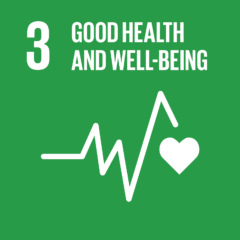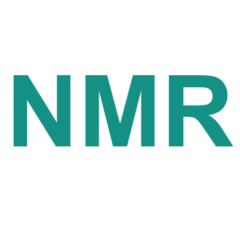This sub-section summarizes global maternal and newborn health targets including the Sustainable Development Goal (SDG) MNH targets and the combined Every Newborn Action Plan (ENAP) and Ending Preventable Maternal Mortality (EPMM) targets.
At the global level, MNH targets to date have focused on mortality reduction and service coverage targets. The MNH Metrics Resources issue page includes additional resources with guidance on maternal and newborn health monitoring frameworks and indicators, including mortality, service coverage, quality of care, and other categories of indicators.
Sustainable Development Goals
The third Sustainable Development Goal (SDG) is to “Ensure Healthy Lives and promote wellbeing for all at all ages.” The SDG maternal target (SDG 3.1) and newborn target (SDG 3.2) are based respectively on the global target in the Strategies for Ending Preventable Maternal Mortality and Morbidity (EPMM) and the Every Newborn Action Plan (ENAP).

SDG 3.1
By 2030, reduce the global maternal mortality ratio to less than 70 per 100,000 live births; and no country should have an MMR > 140 per 100,000 live births.
SDG 3.2
By 2030, end preventable deaths of newborns and children under 5 years of age, with all countries aiming to reduce neonatal mortality to at least as low as 12 per 1,000 live births.Ending Preventable Maternal Mortality and Morbidity (EPMM) Targets
The EPMM targets and strategies are grounded in a human rights approach to maternal and newborn health, and focus on eliminating significant inequities that lead to disparities in access, quality and outcomes of care within and between countries. SDG 3.1 is based on EPMM targets.
An EPMM measurement roadmap, including service delivery and readiness targets, is currently under development. Indicators recommended by EPMM as part of a common EPMM Monitoring Framework are described in the MNH Metrics Resources issues page.

Global Target
The average global target is an MMR of less than 70/100 000 live births by 2030.
Country Target
The supplementary national target is that no country should have an MMR greater than 140,000 live births (a number twice the global target) by 2030. By 2030, all countries should reduce MMR by at least two thirds of their 2010 baseline.EPMM Country Targets
The following sets of national targets are recommended:
Additional MMR Resources
WHO is the leading agency of the United Nations (UN) Maternal Mortality Estimation Inter-Agency Group (MMEIG) a UN initiative comprising WHO, UNICEF, UNFPA, the World Bank Group and the UN Population Division. The MMEIG has the function to update the inter-agency estimates of maternal mortality and contributes to monitoring progress towards the achievement of Sustainable Development Goal 3 – “Ensure healthy lives and promote well-being for all at all ages” by producing estimates of the maternal mortality ratio (MMR) (target 3.1.1).
This report, published by the United Nations (UN) Maternal Mortality Estimation Inter-Agency Group (MMEIG), presents internationally comparable global, regional and country-level estimates and trends for maternal mortality between 2000 and 2017.1 Countries and territories included in the analyses are WHO Member States with populations over 100 000, plus two territories (Puerto Rico, and the West Bank and Gaza Strip)2. The results described in this report include the first available estimates for maternal mortality in the SDG reporting period; but since two years (2016 and 2017) is not sufficient to show trends, estimates have been developed and presented covering the period 2000 to 2017.
The Sustainable Development Goal (SDG) Target 3.1 calls for a reduction in the global maternal mortality ratio (MMR) to less than 70 per 100 000 by 2030; and no country should have an MMR greater than 140 per 100 000.The Maternal Mortality on-line progress calculator can be used to compute the MMR reduction and annual rate of reduction for an individual country based on the SDG global and country MMR targets.
Every Newborn Action Plan (ENAP) Targets
The Every Newborn Action Plan (ENAP), published in 2014, sets out a vision of a world in which there are no preventable deaths of newborns or stillbirths, where every pregnancy is wanted, every birth celebrated and women, babies and children survive, thrive and reach their full potential. ENAP supports SDG 3.2, aimed at ending preventable deaths of newborns and children under 5, presenting evidence-based solutions to prevent newborn deaths and stillbirths. It sets out a clear path to 2020 with specific global and national milestones.

National Neonatal Mortality Rate (NMR)
< 12 deaths per 1,000 live births by 2030 (<10 by 2035)
National Stillbirth Rate (SBR)
< 12 stillborns per 1,000 total births by 2020 (< 10 by 2035)ENAP Service Delivery and Readiness Targets
ENAP service delivery and readiness targets were recently updated and published in a report ‘Ending Preventable newborn Deaths and Stillbirths by 2030: Coverage targets 2020-2025’. The ENAP Service coverage targets include national and subnational targets for use by program managers.
An Every Newborn Action Plan Progress report is published on a regular basis.
Additional Newborn Mortality Resources
The United Nations Inter-agency Group for Child Mortality Estimation (UN IGME) produces estimates of child and adolescent mortality annually, reconciling the differences across data sources and taking into account the systematic biases associated with the various types of data on child and adolescent mortality. While about half the countries with available data for 2020 excess mortality analysis are high-income countries, evidence from low- and middle-income countries – e.g., Brazil, India, Kenya, Mexico, Mozambique and South Africa – similarly showed little impact on national-level child, adolescent and youth mortality in 2020. Following analysis of these data and recommendations from its Technical Advisory Group, the UN IGME has not adjusted the 2020 rate for COVID-19-related mortality (see ‘Box: COVID-19 and Child and Youth Mortality in 2020’ on p. 6 for more details). The estimates in this report are based on empirical data up to 2020, where available, or extrapolation to 2020 by continuing recent trends from the most recent empirical data point available.

